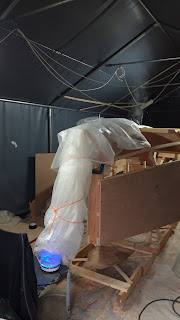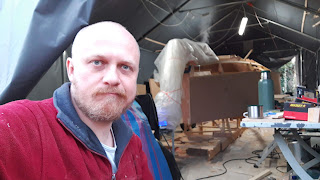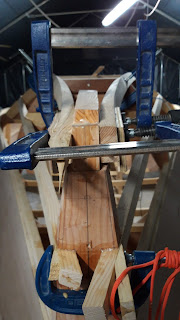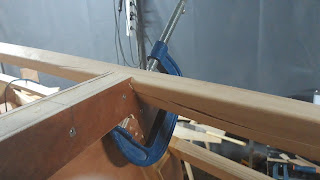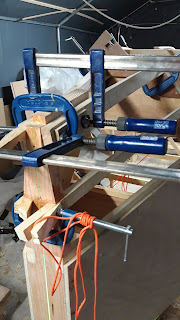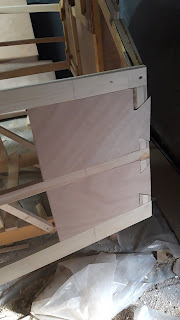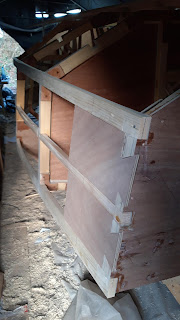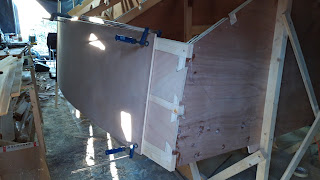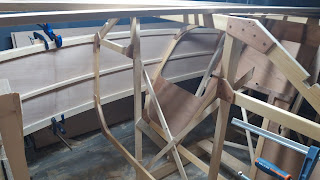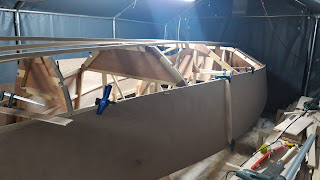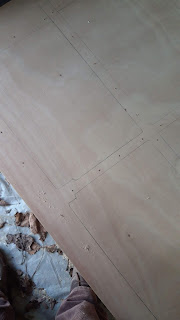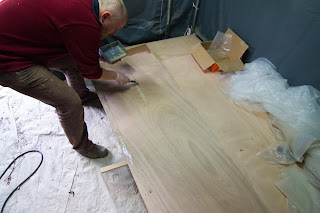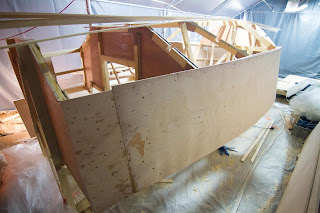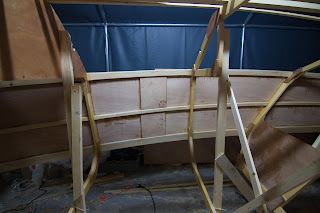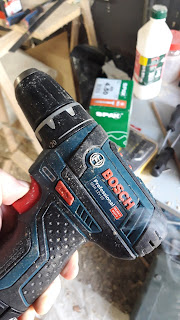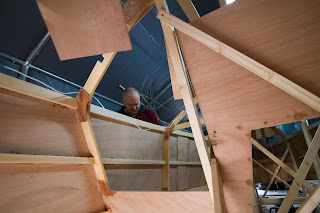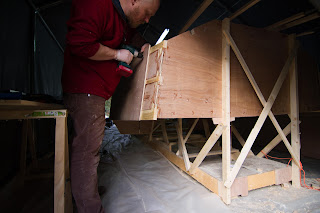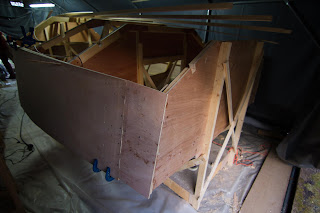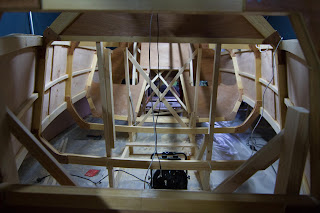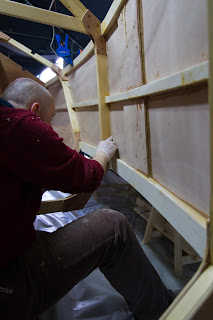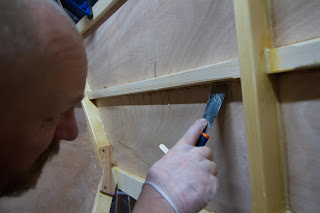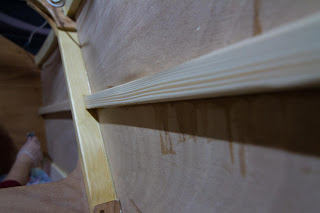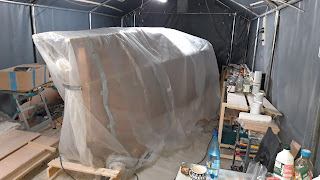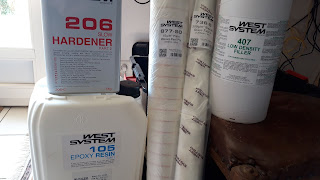The lower chine stringers need to be bent and twisted in the bow section, quite dramatically. I couldn't make it work cold and dry so I decided to do some steam bending. Under the French quarantine law I cannot just go to the hardware store (which is closed btw., who knows for how long) so I had to improvise a steaming jig. I found some plastic foil that withstood my home cooked boiling test - same stuff I have covered the floor with), bubble wrap for insulation, some plastic bottles to prevent the foil from collapsing on the planks, a home water cooker and voila, a steaming contraption is born.
Cooking the wood for 2 hours did make it much more pliable. Technically it did let itself be forced to where I needed it to be:
BUT: it did split and check. A little bit. I am not worried though, the fibers did not break, they just separated. I will glue the split, fill in the cracks and it will be good as new. In this section those stringers are not carrying any longitudinal loads, they are there mostly to hold the plating, the chine in that section is at a 45 deg angle (and more) so the stiffness is also generated by the plating geometry. So I'm good.
I'm letting the stringers rest clamped up before I shape and attach them.
It has also gotten cold again so I cannot comfortably apply epoxy, which is just as well. The longer the wood sits in the frame the easier it will be to glue it. I ordered some 205 fast hardener to be able to finish the hull in cold weather, it cures in temperatures down to 4 degC. It will take a few days to arrive so I'll probably start shaping the bevels on the upper chine and glue up the 3 last deck beams.
auf widersehen.

